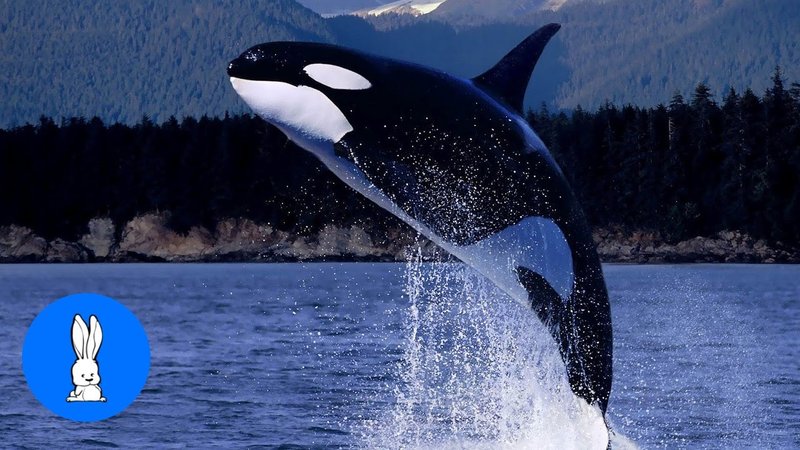
Have you ever looked out at the ocean and wondered what lies beneath the surface? One of the most fascinating creatures swimming in the deep blue is the killer whale, or orca, as they are often called. These magnificent animals are not only the largest members of the dolphin family but also some of the most intelligent creatures on the planet. Understanding killer whales feels like diving into a world of complex social structures, extraordinary hunting techniques, and stunning adaptability.
Killer whales are renowned for their striking black and white coloration and their impressive size, making them a captivating sight in the wild. They live in diverse habitats and are known to roam across vast stretches of ocean. But there’s so much more to these animals than just their appearance. Did you know that killer whales use sophisticated vocalizations to communicate with each other, almost like they have their own language? This communication is vital for their social dynamics, hunting, and more.
Physical Characteristics
Killer whales are truly remarkable in their physical attributes. Adult males typically reach lengths of up to 20 to 26 feet, while females are slightly smaller, averaging around 16 to 23 feet. Their size alone makes them awe-inspiring, but it’s their impressive dorsal fin that really catches your eye. Male killer whales have a tall, triangular fin that can stand up to 6 feet tall, while females have a curved fin that is generally shorter. This distinct feature aids in identification and plays a role in their social behaviors.
Another fascinating aspect of their appearance is their unique coloring. The striking black and white pattern serves several purposes, including camouflage while hunting. This countershading helps killer whales blend in with the ocean’s depths when viewed from above, making it harder for prey to spot them. Their skin is also incredibly thick, often measuring up to 5 inches, which helps insulate them in chilly waters.
| Characteristic | Details |
|---|---|
| Size | Males: 20-26 feet; Females: 16-23 feet |
| Weight | Males: Up to 12,000 lbs; Females: Up to 8,000 lbs |
| Life Span | Males: 30-50 years; Females: 50-90 years |
| Diet | Fish, squid, seals, dolphins |
| Habitat | Oceans worldwide, from polar regions to tropical seas |
| Social Structure | Pod-based, often matrilineal groups |
Habitat and Distribution
Killer whales are found in oceans all over the world, from the icy waters of the Arctic to the warm seas of the tropics. This adaptability is one of the reasons these amazing animals are so successful. Generally, they prefer coastal areas rich in food, but they can also thrive in deep oceanic waters. Their wide-ranging habitats reflect their ability to hunt a variety of prey, including fish, seals, and even whales.
You might be surprised to learn that killer whales are not confined to any specific region. They can be spotted off the coast of Norway, in the waters around the Pacific Northwest, and even in the open ocean miles from land. This global distribution means that different populations have adapted to their environments, leading to unique behaviors and hunting techniques.
Diet and Hunting Techniques
The killer whale’s diet is incredibly diverse. These apex predators are known to consume a wide range of prey, including fish, squid, and marine mammals, such as seals and even other whales. What sets killer whales apart is their sophisticated hunting strategies. They often hunt in pods, utilizing tactics that demonstrate their intelligence and teamwork.
One impressive technique they use is called carousel feeding, where they work together to herd fish into tight schools, making them easier to catch. Another remarkable hunting method involves creating waves to knock seals off ice floes. This kind of cooperative hunting showcases not just their intelligence but also the strong social bonds within pods. The learning process is critical; younger orcas often learn these techniques by observing older members of their group, highlighting the importance of passing knowledge through generations.
Social Structure and Communication
Killer whales are inherently social animals. They live in family groups known as pods that can consist of anywhere from a few to over 40 individuals. These pods typically consist of matrilineal structures, meaning they are led by the oldest female, who often becomes the central figure in the pod’s social interactions. The bonds within these pods are incredibly strong, with members often displaying affectionate behaviors toward one another.
Communication among killer whales is another fascinating aspect of their social life. They employ a complex array of clicks, whistles, and pulsed calls to convey information to one another. Researchers believe that different pods might even have their own distinct dialects. This means that the sounds you hear from orcas in one region could be quite different from those in another. This precise communication system is essential for coordinating hunts and maintaining social cohesion within the pod.
Conservation Status
Despite their awe-inspiring presence, killer whales face serious threats. Some populations are endangered due to factors such as habitat loss, pollution, and decline in prey availability. As top predators, they are also affected by the toxins that accumulate in their bodies through the food chain. Conservation efforts are essential to protect these magnificent creatures and ensure their survival for future generations.
Organizations worldwide are working to monitor killer whale populations and their habitats. Efforts include protecting critical feeding and breeding areas and advocating against pollution. Engaging communities in conservation initiatives is vital as public support can lead to effective policy changes. The survival of killer whales relies not just on scientists and conservationists, but on all of us taking steps to preserve the natural world.
Fun Facts about Killer Whales
- Killer whales are often referred to as orcas, which is derived from their scientific name, Orcinus orca.
- They have been known to swim at speeds of up to 34 mph when hunting.
- Killer whales are highly intelligent and can live for over 90 years, particularly females.
- Each pod has distinct vocalizations that can sound like their own language.
- They have a wide range of prey, demonstrating flexibility in their diet.
FAQ
What is the lifespan of a killer whale?
Male killer whales typically live between 30 to 50 years, while females can live significantly longer, often up to 90 years. This impressive lifespan allows them to experience a range of social dynamics within their pods, passing knowledge and culture through generations.
Are killer whales dangerous to humans?
Killer whales are generally not considered a threat to humans in the wild. While they are apex predators with powerful hunting abilities, there have been very few documented attacks on people. On rare occasions, captive killer whales have displayed aggressive behavior, likely due to stress and confinement. In their natural habitat, they tend to avoid human interactions.
What do killer whales eat?
Killer whales have a varied diet that can include fish, squid, seals, and even other whales. Their hunting techniques can differ based on the pod’s location and the availability of prey. For instance, some populations specialize in hunting seals, while others may focus on larger fish species.
How do killer whales communicate?
Killer whales communicate using a range of vocalizations, including clicks, whistles, and pulsed calls. Each pod has its own unique set of sounds, which may serve different purposes, such as coordinating hunts or maintaining social bonds. Researchers continue to study these vocalizations to understand the complexity of their communication.
Where can killer whales be found?
Killer whales are found in oceans worldwide, from polar regions to tropical seas. They adapt to various habitats, making them one of the most widely distributed marine mammals. While they can thrive in deep oceanic waters, they often prefer coastal areas rich in food sources.
What is the social structure of killer whales?
Killer whales live in family groups called pods, which can vary in size from a few individuals to over 40. These pods are usually matrilineal, with older females leading the group. Social bonds within pods are strong, and members share responsibilities such as hunting and caring for young.
How do killer whales hunt?
Killer whales employ sophisticated hunting techniques that often involve teamwork. For example, they may use a method called carousel feeding, where they work together to herd fish into tight schools. This method highlights their intelligence and the strong social bonds that exist within their pods.
What threats do killer whales face?
Killer whales face several threats, including habitat loss, pollution, and declining prey availability due to overfishing. As apex predators, they are also susceptible to accumulating toxins in their bodies. Conservation efforts are crucial to mitigating these threats and ensuring the survival of killer whale populations.
Can killer whales be kept in aquariums?
While killer whales can be kept in captivity, such as in aquariums or marine parks, this practice is highly controversial. Many experts argue that such environments cannot adequately replicate the vast ocean habitat these animals require for their well-being. Captive killer whales often exhibit signs of stress and behavioral issues, raising ethical concerns about their treatment.
Are killer whales the same as whales?
Killer whales are often called orcas, and while they share the name “whale,” they are actually the largest members of the dolphin family. They belong to the cetacean group, which includes both dolphins and whales. This classification highlights the close relationship between these marine creatures, even though they differ significantly in size and behavior.
Do killer whales have natural predators?
As apex predators, killer whales have few natural predators. However, there have been documented cases of large sharks, particularly great whites, attacking juvenile orcas. Nonetheless, adults are typically at the top of the food chain, which allows them to thrive in their environments.
How intelligent are killer whales?
Killer whales are known for their high intelligence, which is evident in their complex social structures, hunting techniques, and communication skills. They demonstrate problem-solving abilities and exhibit behaviors that suggest they have emotions and social connections similar to those of humans. Their intelligence continues to be a topic of research and fascination among scientists.

